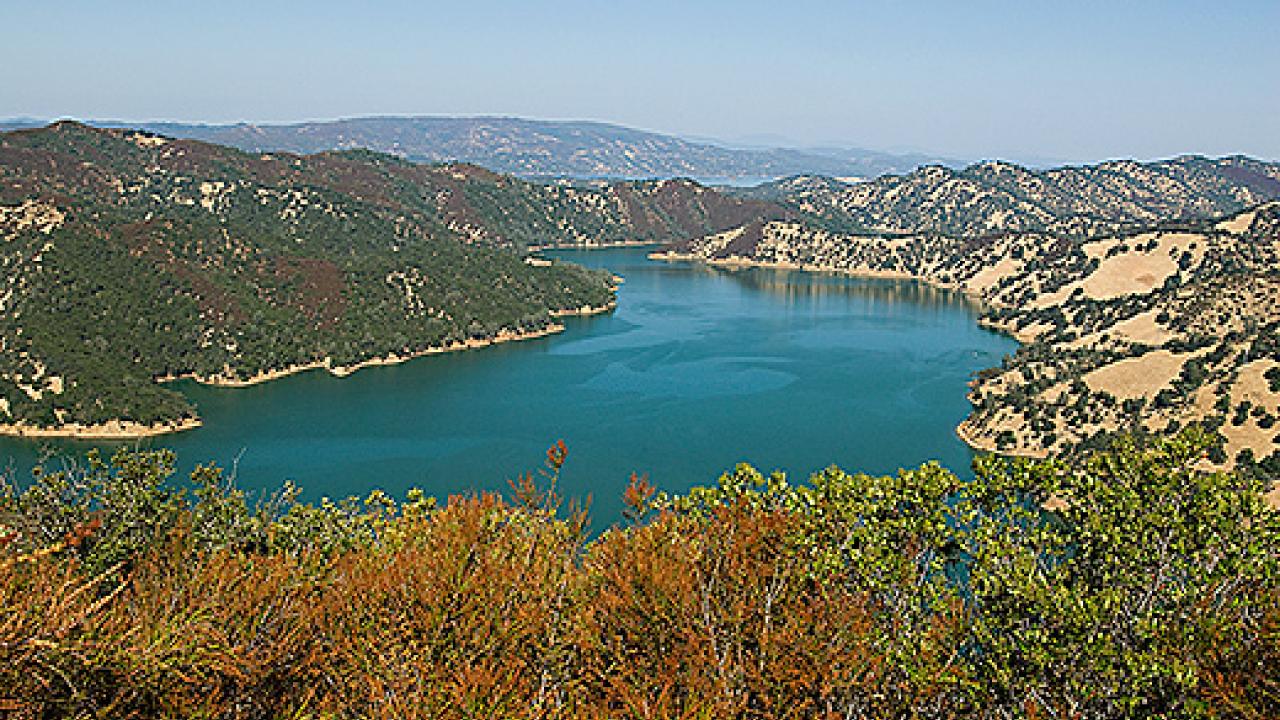Researchers at the University of California, Davis, working with colleagues at the other UC campuses, have developed an ambitious plan to use the UC Natural Reserve System to detect and forecast the ecological impacts of climate change in California.
The team’s proposal to establish a UC-wide Institute for the Study of Ecological and Evolutionary Climate Impacts has received $1.9 million in funding, the largest of the new President's Research Catalyst Awards announced by UC President Janet Napolitano.
The NRS is the world's largest system of university-administered natural reserves, offering a powerful opportunity for scientists to study how climate change will affect California ecosystems and the ecosystem services that people rely on.
UC Davis has been on the forefront of 21st-century technologies, using wireless environmental sensor arrays at multiple campus reserves, including Quail Ridge Reserve, where a wireless mesh network communication system helps researchers collect environmental and ecological data.
“This is a wonderful opportunity for the UC Davis reserves and for the reserve system as a whole,” said UC Davis Natural Reserve System associate director Virginia Boucher. “As a result of long-term collaborations between the UC Davis reserves and campus engineers and computer scientists, our reserves provide prototypes for a variety of sensor networks.”
Multiple faculty from UC Davis are involved, with Environmental Science and Policy Associate Professor Marissa Baskett and John Muir Institute of the Environment Director Mark Schwartz coordinating the campus effort.
The multicampus project is led by Barry Sinervo, professor of ecology and evolutionary biology at UC Santa Cruz. “We are going to be creating a large network of UC climate researchers and using the NRS system as a climate change observatory for biotic systems,” Sinervo said.
The researchers will assemble historical records, establish a new system for data collection, and conduct experiments and long-term monitoring studies across the state.
Although there have been many in-depth studies documenting climate impacts, they have largely been done independently, with results that are difficult to compare among studies. The new institute will pursue a coordinated approach across broad geographic scales. Researchers will develop models to predict future changes to ecosystems and potential impacts on ecosystem services that might threaten the capacity of Californians to adapt to a changing climate.
The UC reserves offer secure study sites where UC faculty and students can undertake long-term research and experiments. The system has many unique features that are unavailable at other reserves or national parks, including:
- proximity to a diverse and ecologically sophisticated population of university students, volunteer naturalists, docents, and local educators who can engage citizen-scientists and education programs;
- availability of local meteorological stations currently recording high-resolution climate data;
- ability to sample and archive datasets that can be made available online for public access and analysis; and
- collective representation of the range of terrestrial and near-shore marine ecological zones of California.
The institute is one of five newly funded projects designed to stimulate UC research in areas that could benefit California and the world. The President's Research Catalyst Awards will channel $10 million over three years to fund research in areas of strategic importance, such as sustainability and climate, food and nutrition, equity and social justice, education innovation, and health care.
"The President's Research Catalyst Awards will spur UC research and offer our faculty and students new opportunities for cross-campus, multidisciplinary collaboration," Napolitano said. "We want to support research endeavors that have real-world impact in areas with critical needs."
UC Davis manages five reserves representing a wide variety of habitats. They include:
- Bodega Marine Reserve, which surrounds the Bodega Marine Laboratory;
- Jepson Prairie Reserve, remnant natural prairie in the Sacramento Valley;
- Donald and Sylvia McLaughlin Reserve, which protects unusual serpentine habitats near a mine site in Lower Lake;
- Quail Ridge Reserve, which helps protect native habitats and wildlife near Lake Berryessa; and
- Stebbins Cold Canyon Reserve, which has a mix of habitats, including grasslands, blue oak woodland, chaparral shrublands, riparian woodland and a seasonal stream.
Media Resources
Kat Kerlin, Research news (emphasis on environmental sciences), 530-750-9195, kekerlin@ucdavis.edu
Marissa Baskett, Environmental Science and Policy, (530) 752-1579, mlbaskett@ucdavis.edu
Mark Schwartz, John Muir Institute of the Environment, (530) 752-0671, mwschwartz@ucdavis.edu
